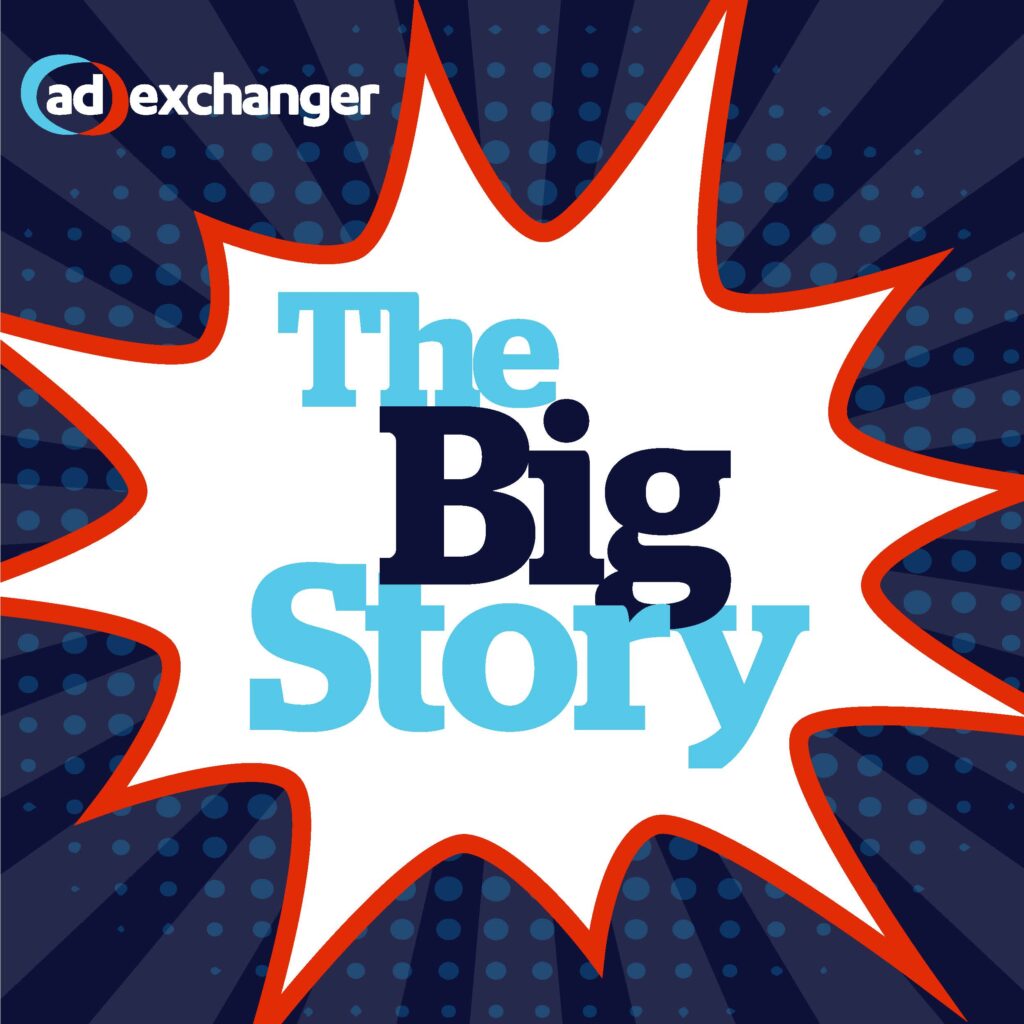Important Timelines for AdWords Analysis
How much AdWords data do you need to make decisions about your campaigns? The first and most significant point to remember is that no campaign ever performs the same day to day. So the metric you should be interested in is your campaign’s "standard deviation." Here’s a look at why and how you should be using long and short timelines when analyzing data. (Search Engine Watch)
All About Facebook’s EdgeRank Algorithm
EdgeRank is one of the most important algorithms for marketers, but very few people have even heard of it, and an even smaller handful of people can claim that they truly understand it. EdgeRank is Facebook’s algorithm, which is used to determine what appears in users’ news feeds. It’s made up of three main parts: affinity, edge weight and recency. (Econsultancy)
Marketers Should Fear Google
Razorfish Chairman Clark Kokich offers his thoughts of a wide range of topics in this interview. One of the topics he touches on is the case for "hating" Google, which he calls "the biggest benefactor of the ‘last-click conspiracy.’" Kokich warns against the belief that direct-response metrics are all a marketer needs for marketing and building brands. (DIGIDAY:DAILY)
Use of Animated GIFs in Emails Has Plateaued
Last summer, the use of animated GIF images in emails surged to about twice levels seen in the previous year. But so far this year, the use of animated GIFs in emails is trending a bit lower compared to last year. Over the last 12 weeks, 7.6 percent of promotional emails from the top online retailers included at least one animated GIF. Animated GIFs are best used at least occasionally, and are great for "waking up" your email design. (MediaPost)
What’s Killing Yahoo and AOL?
Yahoo is still a leader in many regards but is struggling to sell their ad inventory directly and are selling more of it as backfill/remnant inventory. AOL has the same issues, except worse. Part of the problem for portals looking to grow is the hype surrounding mobile, Facebook and social media. Heck, even AdWords is social now. Three other issues are ad retargeting, integrated media buys and the watering down of network quality. (SEO Book)
Google Plans to Acquire Motorola Mobility for $12.5 Billion – But Why?
Google wants to acquire Motorola Mobility for $12.5 billion, which would place the up-until-now smartphone OS maker into the smartphone hardware business. Google CEO Larry Page expects the deal to “supercharge Android.” The Android operating system will remain open to all manufacturers, according to the company. The deal will surely draw regulatory scrutiny, but maybe the most interesting aspect of the deal is the reflection of how screwed up the U.S. patent system is. (Wired.com, CNET, BuzzMachine)
5 Principles for Better Outreach Link Building
Link building should be the easiest and most fun aspect of SEO. These five principles has helped this SEO pro boost his link-building success rate from about 20 percent to around 80 percent: 1) talk to people like people (i.e., no form letters); 2) stand out in the inbox; 3) do your research; 4) offer value; and 5) maintain rapport. (SEOmoz)
Each Search Is Worth 50 Cents
According to a report from McKinsey & Company, the average Internet user conducted about 1,500 searches in 2010. The report, titled “The Impact of Internet Technologies: Search,” also revealed that each search conducted in 2009 was worth around $0.50. (WebProNews)
Modified Broad Match
Modified broad match is misunderstood by many but remains an important tactic. With the help of “Wedding Crashers” to set the scene, this post examines the basics of modified broad match: the modifier, fully modified broad match keyword, dual anchor modified broad match keyword, and anchor modified broad match keyword. (PPC Hero)
Using Mobile to Broaden Your SEO Campaign
Mobile SEO shouldn’t be viewed as a standalone product, but as another channel to bolster your SEO strategy. Here’s a look at how to use your mobile site to help in lead generation and act as “link bait.” (Search Engine Land)
Loffles Offers Prizes for Watching Commercials
Loffles is a new website that offers users a chance to win from a selection of prize in exchange for viewing a commercial and answering two or three questions to confirm they’ve actually watched the commercial. The idea for Loffles was inspired by the popularity of online sweepstakes. Advertisers aren’t being charged yet, but they’ll eventually be charged on a per-view basis. The company has raised about $500,000 from private equity groups and individual investors. (NYTimes.com)
SEO Tactics: On-Site Optimization
Following a discussion on keyword selection, this series on SEO tactics looks at on-site optimization, which “has long been a cornerstone in any organic search effort.” Content, quality and direct response are all core on-site attributes to be used. This post also looks at crawlability and technical concerns, as well as site structure. (Search Engine Watch)
6 Tools to Measure Social Influence
Either we or our bosses want to know some tiny details related to our social media campaigns. Among the tools available to help dig up the answers are Klout, Twylah, Twenty Feet, Peer Index, SproutSocial and CrowdBooster. (Outspoken Media)
Creating a Massive Impact With Basic Google Analytics Reporting
Google Analytics provides many standard reports – many of which are ignored because of their lack of flair. But looking at reports like Java Support and Browser Report can highlight the revenue potential being missed out on. (Search Engine Land)
10 PPC Experts to Follow on Twitter
Here’s a list of the top 10 PPC experts to follow on Twitter, in no particular order. Included in the list are David Szetela, Andrew Goodman, John Lee, Pamela Lund and Matt Umbro. (Searching Beyond the Paid)
Amazon: The Next Big Thing in Online Advertising
Amazon’s foray into the world of online advertising went a bit unnoticed in late June. “Amazon will now use its huge supply of data to pool consumers into buckets based on the products they looked at or purchased on the retailer’s website. The company will help advertisers reach these consumers with targeted media, using behaviorally targeted display ads to drive them to any URL.” It’s almost a surprise that it took Amazon so long to use its mountains of sales and consumer shopping data like this. (AdAge.com)
Why Transactional Emails Fall Short
Transactional emails need to be optimized, from delivery to content. This post discusses eight areas where many transactional email messages fall short. Among them are delayed delivery, uninformative subject lines and no valuable content. (MediaPost)
Facebook Enables ZIP Code Targeting for Ads
Facebook recently unveiled ZIP code targeting for ads, which should perk up the ears of local and political advertisers. The new feature enables advertisers to target ads, including Sponsored Story campaigns, down to the ZIP code level. (ClickZ)
SEO Metrics You Should Track and Report
In order to understand your SEO metrics, you must know how your website behaves – “its cycles and rhythms.” This post examines six SEO metrics you should be tracking and reporting, including the number of search engines sending traffic to your site, the number of non-search referring sites sending traffic to your site and the number of pages on your site receiving non-search referral traffic. (SEO Theory)
Link Building: Two Categories, One Objective
When you boil down all the theories about the best way to build links, you find two basic categories: content strategy and direct outreach. Regarding content strategy, remember that good content doesn’t just acquire links. Regarding direct outreach, remember that quality matters. Read on for deeper discussions of these two branches of link building. (SEO.com)
Video and Search Ads Drive Most Clicks and Conversions Among Affluents
According to a survey from Ipsos Mendelsohn for the Interactive Advertising Bureau, 59 percent of affluents (those with an annual household income of $100,000 or more) took action based on a digital ad they saw in the past six months. Digital ads also created awareness of new products and companies for the majority of affluents. Additionally, the survey found that 45 percent of affluents clicked on a digital ad, and that 41 percent of affluents took an action after seeing a video ad or a search ad. (eMarketer)
Search and Email Are Still Important
Social media might be all the rage lately, but recent findings from a Pew Internet survey show that searching and emailing remain the top two online activities. Ninety-two percent of adults polled last November said they send or read email and use a search engine, respectively. Getting news online followed with 76 percent, while buying a product online got a 71 percent response and using social network sites got a 65 percent response. The takeaway for marketers is clear: don’t forget about search and email. (CNET, Econsultancy)
3 Helpful AdWords Tools You May Not Have Heard of
“Tools are essential in search engine marketing. They save us time, teach us about our market, help us grow our campaigns and make our job easier.” Here are three free AdWords tools that you might not have heard of: 1) Microsoft Advertising Intelligence, 2) Tenscores Manual Bid Optimizer and 3) Jumbo Keyword Editor. (Search Engine Journal)
Proper Attribution Analysis
Campaign optimization is a topic that is at the center of many discussions. Nevertheless, it remains “an elusive holy grail” in this world of hybrid-search, social and display advertising. Attribution is an important part of this pursuit. “Attribution is the science of measuring how each ad placement or media buy contributed to campaign lift or conversions.” Here are three telltale signs that your campaign optimization isn’t using proper attribution analysis: 1) optimization is based on “last click,” 2) optimization is based on arbitrary data and 3) optimization is based on sampling. (MediaPost)
Boosting Google Rankings With Search Volume
Here’s a test – a single test – to see if rankings for a particular site could be moved through search volume and clicks. While the results might not be the most tantalizing, it does seem to show that Google isn’t easily influenced by a few hundred queries. However, click-through rate may have been impacted. Another takeaway is that Google+ drove more than 50 percent of the volume than Twitter did. (SEOmoz)



